Engaging middle and high schoolers can sometimes be tricky. How many times have you planned (what you think is) a cool and exciting lesson, only to walk away feeling pretty bummed and discouraged when your hip activity is a bust? Believe me. I get it. I’ve tried English activities for high school that I am positive (most) of my kids will love and appreciate. I’ve attempted to make English relevant and fresh. I’ve even tried to choose vehicles (like social media) that fit into their lives. As I plan, I often think, “Man, I would have loved having this kind of stuff when I was in school!”
Sometimes, my efforts fall flat. Other times, I hit a home run. After a lot of trial and error, I’ve finally figured out some techniques that consistently work. Here are my favorite English activities for high school.
1. Pretend you are an alien from another planet
As an alien, you don’t understand human emotions. Ask students to explain what happiness is to alien you. They will try to use other emotions to explain happiness, so you will need to kindly remind them that you don’t understand those. Someone will figure out that what you are looking for is figurative language (e.g., happiness is a Diet Coke at 11:30), and then, mission accomplished. This is one of my favorite mini-lessons to do because when I start class with “I am an alien from another planet …,” some give me weird looks, but most don’t even flinch because they’ve already witnessed enough of my shenanigans to think it may be true.
2. Embrace the season and let it dictate your unit
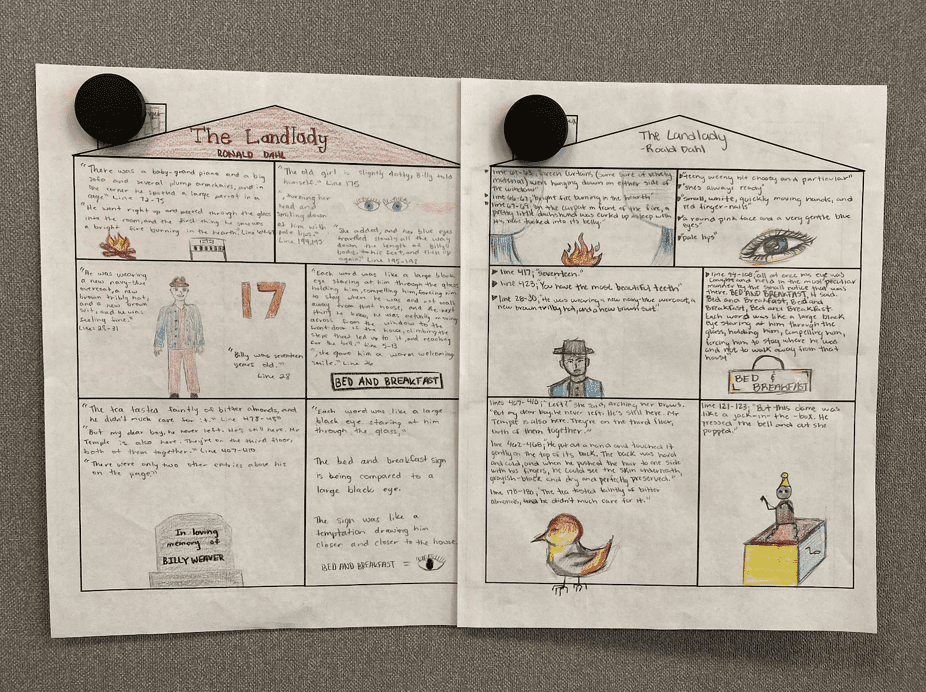
I change things up every year, but most recently I created a unit around “Spooky Season.” We read “spooky” stories and watched suspenseful short videos to evaluate how authors and storytellers employ devices that heighten the suspense for the audience. In these high school English activities, we analyzed theme and character development and compared different mediums all under the umbrella of Spooky October. As always, what works for my school and grade level may not work for everyone, but some of my students’ favorite spooky short stories were “Lamb to the Slaughter” and “The Landlady.”
3. Write your own spooky story
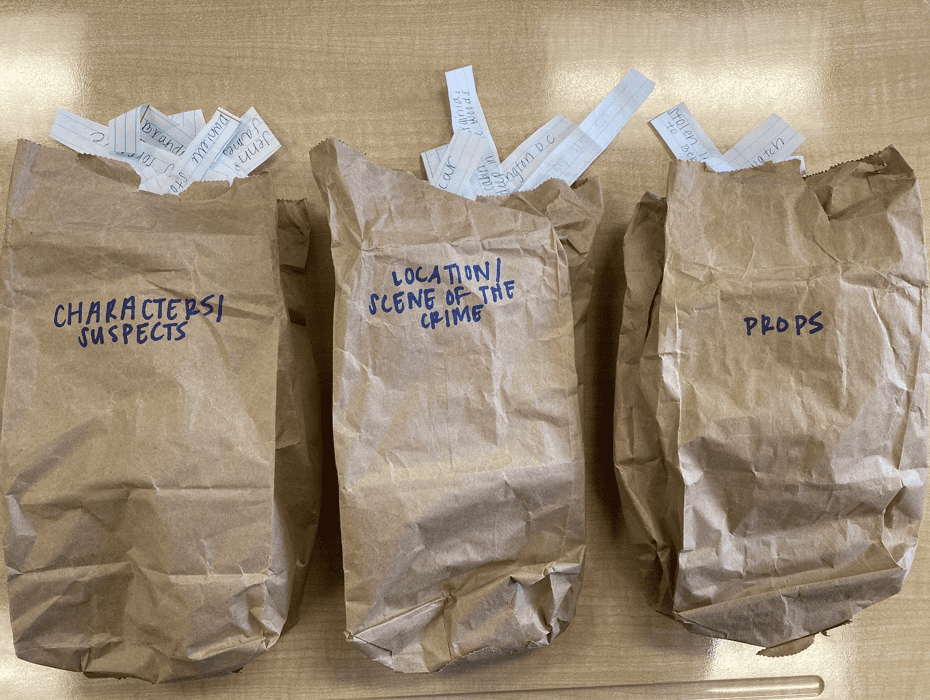
After reading from our mentor texts and learning how to create suspense, we write fictional narratives that will haunt your nightmares … just kidding—I wanted to add a bit of drama. They pull from grab bags I create of different character names, setting ideas, and props they can use to create their own terrifying tale.
4. Turn everyone into a poet with blackout poetry
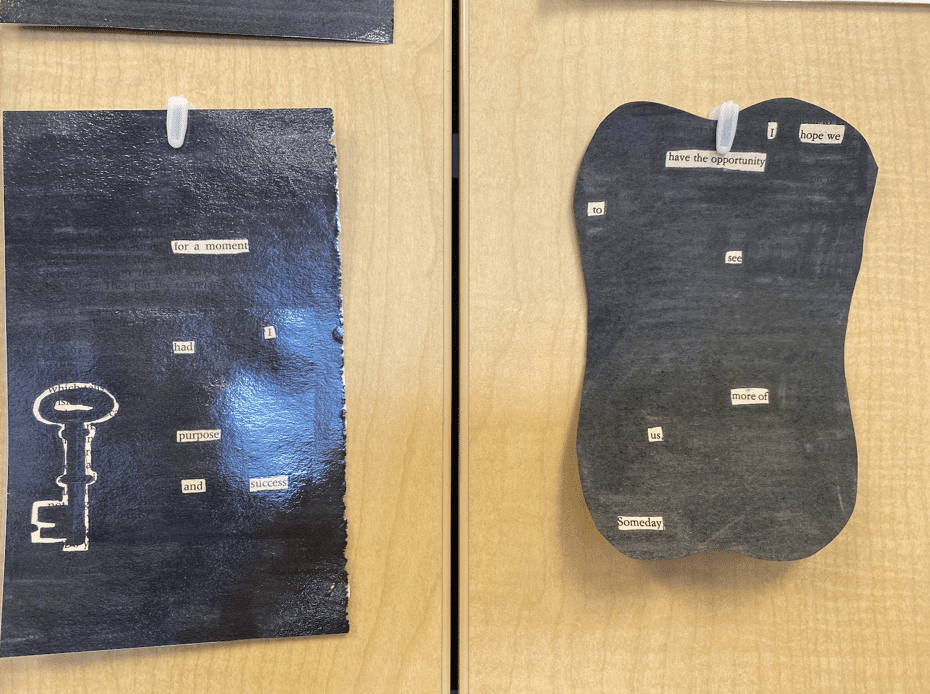

Thanks to Austin Kleon, poetry is cool and accessible. If you haven’t heard of this idea already, you take a newspaper or lose book pages that can no longer be repaired and create a poem using the words on the page. Then, you black out the rest. I’ve done this every year and have changed my approach each time. Sometimes I give them free rein and let the words speak to them, sometimes I’ll give them a specific topic I’d like them to create a poem around. I love to see 25 different variations of “courage” through poetry.
5. Use emojis in class
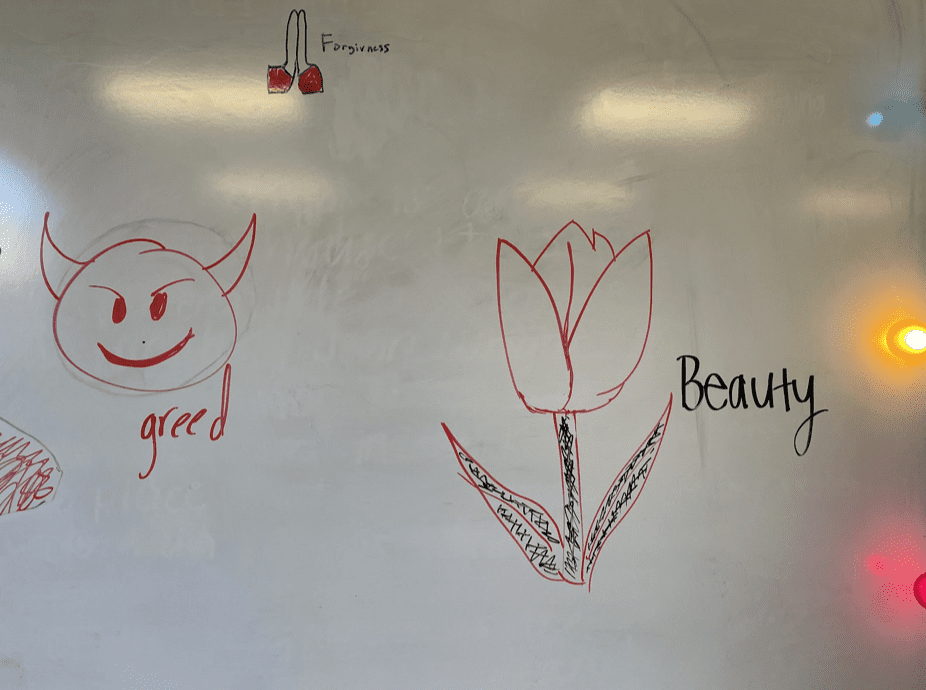
When teaching a complex concept like symbolism, use symbols that are already part of their daily life. Assign each small group a word or theme and then have them choose an emoji to symbolize that message. Have them sketch them out on the board and explain why they chose that symbol, or turn it into a full-on art project and display them around the room. Also check out these other fun ideas for teaching with emojis.
6. Go hunting for mechanics, usage, and grammar errors
Doing a quick search of these kinds of fails on the internet will provide you with a great deal of content. You can turn those fails into a slideshow while the class finds the errors and corrects them, or you can assign a few to each small group to tackle.
7. What’s better than a one-pager?
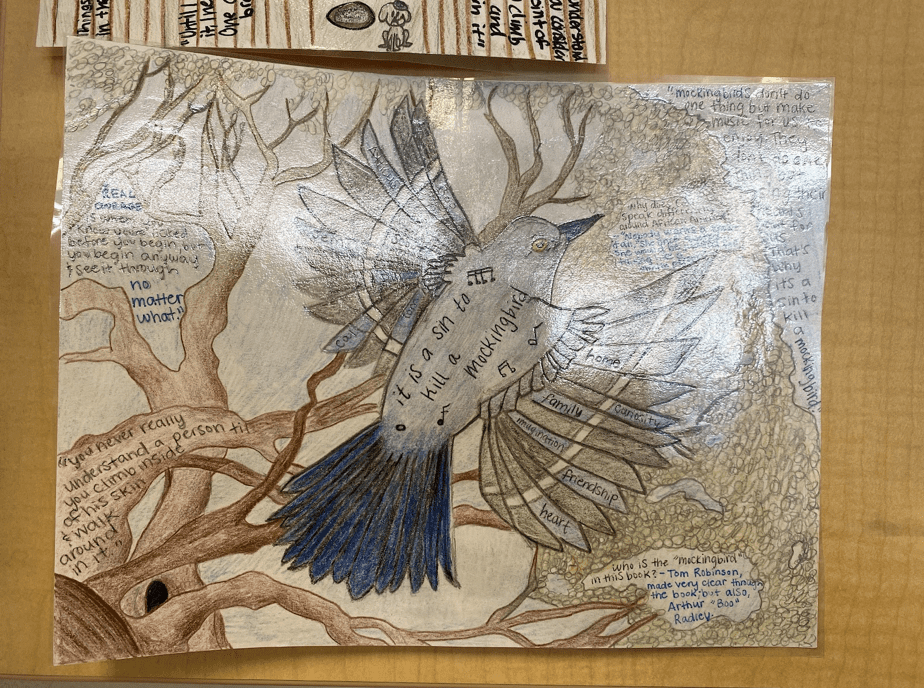

The name speaks for itself here. There are so many variations of one-pager assignments that you could do, but the one that I like is to use one-page as a blank canvas for them to demonstrate their understanding of developing theme and symbolism. They sketch out symbols and images that are significant to the book they are reading and include text evidence to support their inferences and takeaways.
8. Play reviewsical chairs
When I first started teaching and was looking for solidarity, understanding, and inspiration, I found love,teach. In one of her blog posts, she suggested playing reviewsical chairs to prepare for a test. It is like musical chairs, but you review. When the music stops, someone is without a chair and they have to challenge someone else for their chair by answering a review question correctly. This is a fan favorite in middle and high school.
9. Play the flyswatter game
I love a fun review game. This one requires you to put up answers around the room (e.g., character names, dates, themes, symbols, storytelling devices, etc.). Then, you divide the class up into two teams. Have them send two representatives up to the front and arm them with flyswatters. I normally tape off a box that they have to stand in while I read the question. Then, the first person to hit the correct answer with their flyswatter wins the point. This game is intense and so fun! Make sure you move any book bags or obstacles that may be tripping hazards (for me this is just air).
10. Listen to podcasts and discuss them together
Not all teenagers are familiar with podcasts, but it’s a great way to introduce lessons in an interesting way. And so far, my students have reported really enjoying them. In fact, I’ve even had students come back and tell me they’ve continued to listen to a podcast series on their own after we’ve concluded our lesson.
Podcasts encourage students to be actively engaged, because the information being shared must be processed and visualized by the students as it’s being said. I usually prepare questions for them to answer as they listen, and then facilitate a discussion afterward. In my classroom, this sometimes leads to mildly heated debates, which is a learning experience in and of itself. Check out this list of educational podcasts for ideas.
11. Introduce “chapter chats”
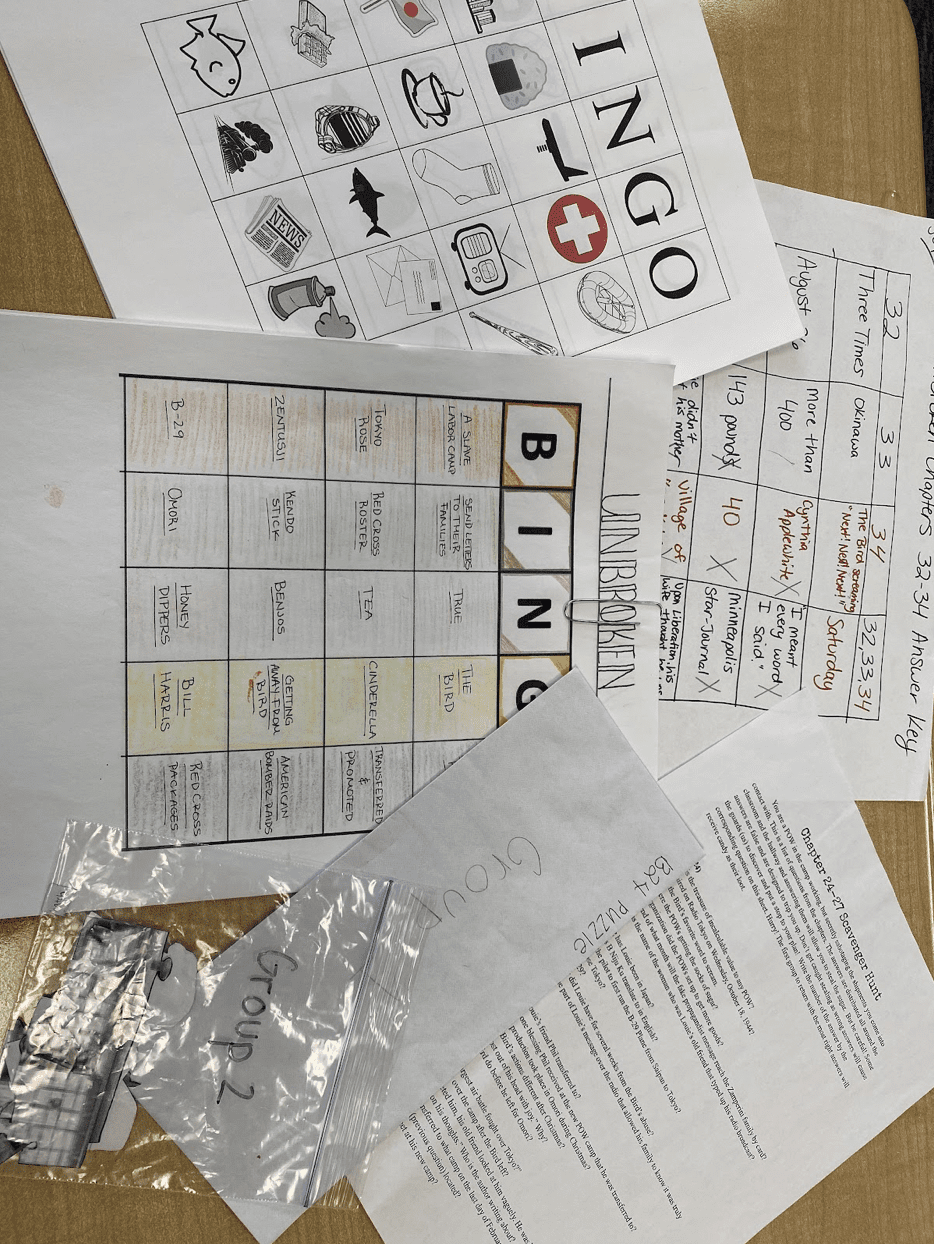
My students love being in charge of leading “chapter chats” in small groups. By encouraging them to be leaders in discussing specific book chapters, they take ownership in a whole new way. I’ve really enjoyed watching my kids come up with thoughtful questions, bring food to connect to something that happened in the text, and even create fun games that encourage their classmates to recall information from the chapter. Chapter chats are great high school English activities to assess those speaking and listening standards while also making them read critically because they are in charge of facilitating the discussion.
12. Let your students be podcasters
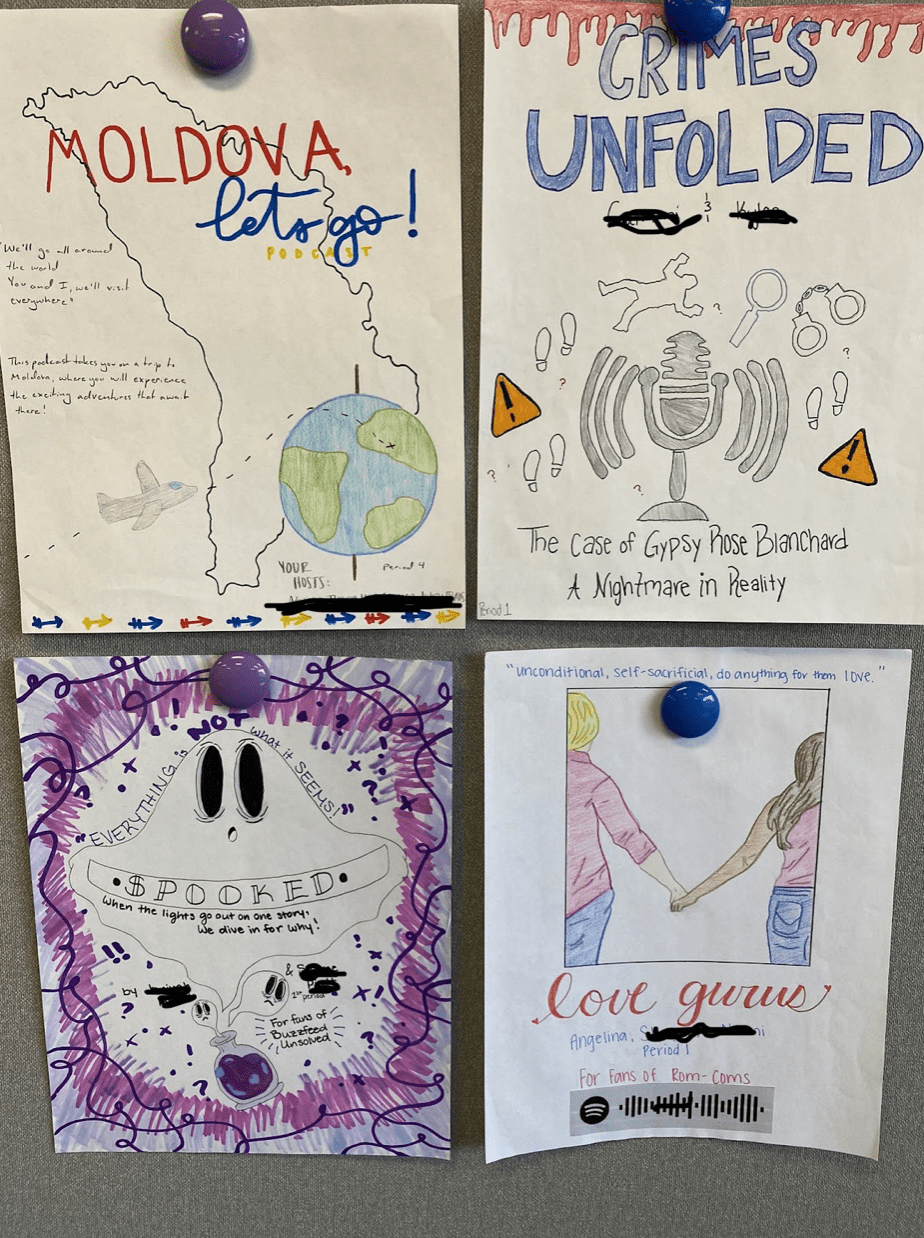
Last year, I finally decided to let my students create their own podcasts. I’ve wanted to do this for years but logistically was not sure how to execute. It took a lot of planning on the front end of the assignment and organizing where to find places for them to record (makeshift sound booths), but we did it! They had to pitch their topics and get a red, green, or yellow light. Then, they had to research, cite evidence, write a script, and finally produce their own podcasts. We listened to the episodes and answered questions on the “listening guide” that they created. I loved this assignment and will definitely do it again.
13. Throw parties with a purpose
We just finished reading The Great Gatsby, and since throwing lavish parties was Gatsby’s thing, we threw our own 1920s soiree. I divided my students into small groups to do research on their assigned topic (historically accurate fashions, refreshments, ambiance, guest list, etc.) and then deliver presentations. The students were responsible for assigning each other parts, complete with instructions on how to dress and what food or beverage to bring. They even provided each participant with a lexicon (specific vocabulary) to use at the party. This assignment was fun, and it also covered many standards, which is a win-win for me!
14. Give speeches as characters
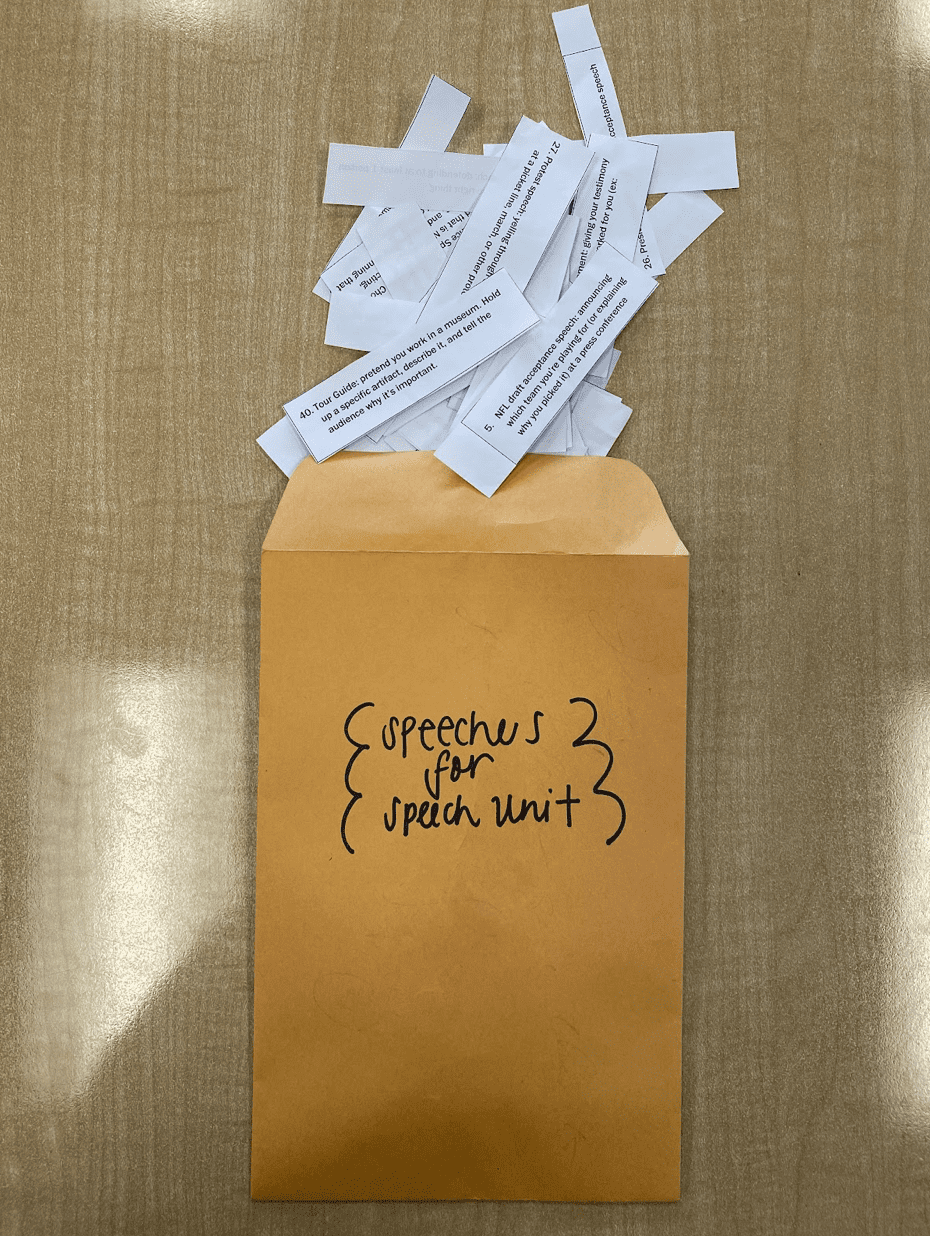
After watching a number of TED Talks and studying what contributed to an effective performance, my students wrote and delivered speeches of their own. They drew prompts for characters with different occupations giving different types of speeches (e.g., Beyoncé giving a Grammy acceptance speech). I found that my students were much more confident and comfortable speaking when given permission to act like someone else. This activity was a hands-down favorite event for my eighth grade students. Those speaking and listening standards can be tough to master, and high school English activities like this helped us get there.
15. Read, solve, and create murder mysteries
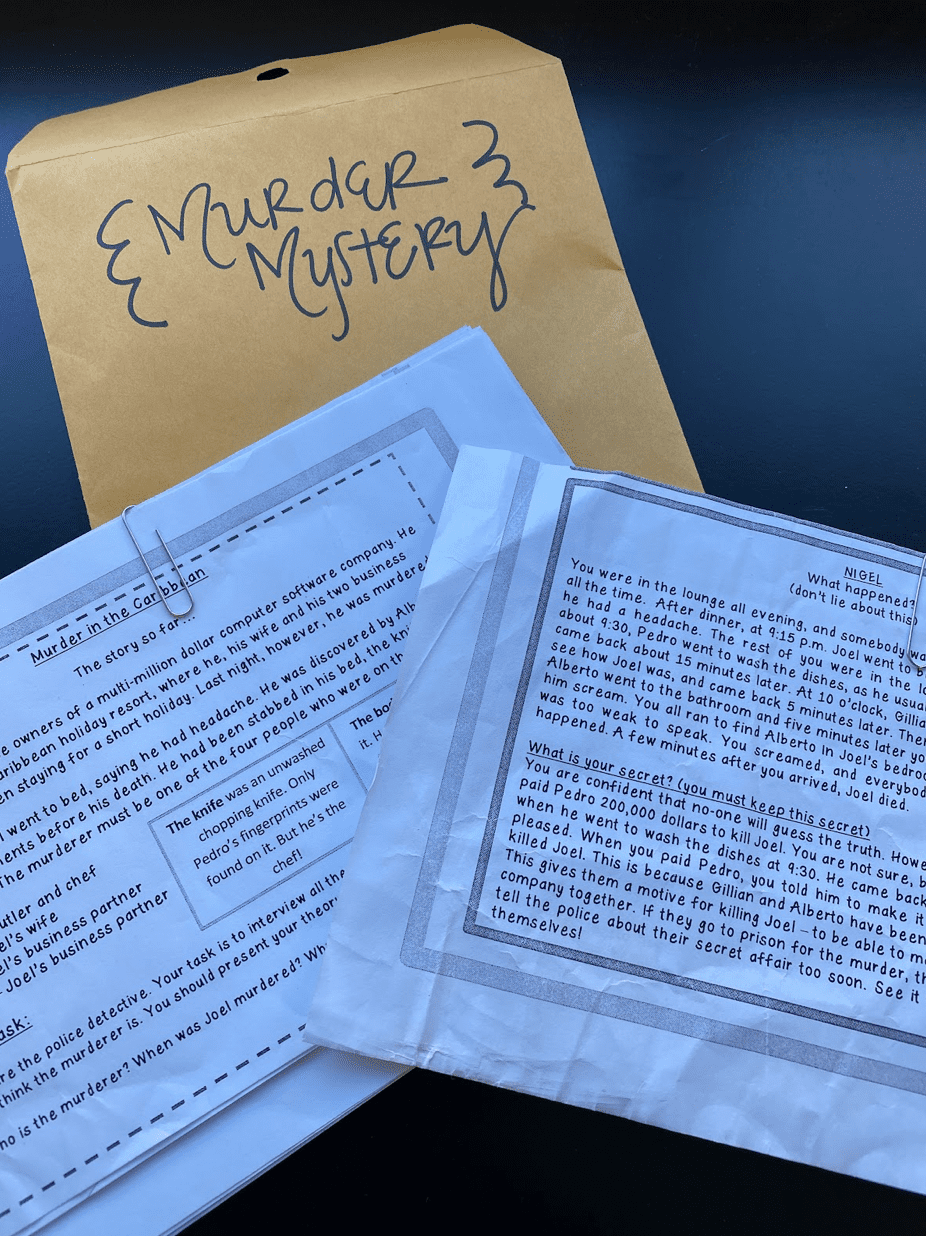
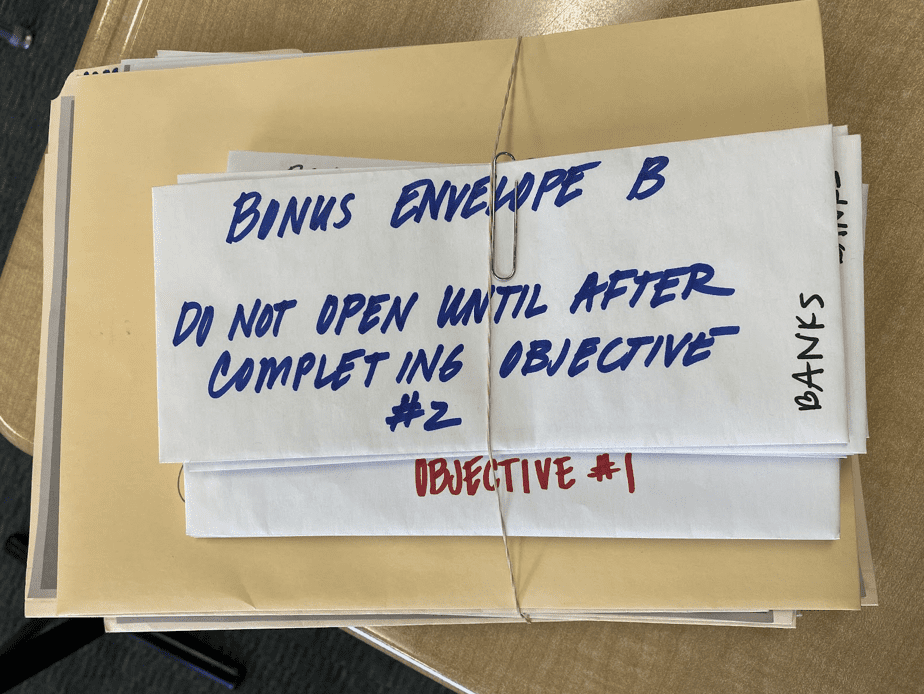
My students in both middle and high school love true crime. I’ve created murder mystery activities for high school English that fit really well with literature units and that focus on making inferences, writing, and using textual evidence. Once the premise of the mystery is determined, students create their own case files, evidence, and clues for their classmates to solve. I’ve had them pull from bags of evidence, locations, and possible suspects to add another element of fun and challenge. It’s simple, but they really like pulling things from mystery bags. This activity is also an excellent support for students who struggle with finding a starting point.
16. Read children’s books
I know many high school and middle school teachers who use children’s literature in their classroom to introduce literary devices. Inspired by Ludacris, I once rapped Llama Llama Red Pajamas in my creative writing class before I had students write children’s books of their own. I am sure there is footage of this out there living sneakily on someone’s camera roll, but thankfully it hasn’t surfaced. Need ideas? Here’s a list of famous children’s books for inspiration.
17. Use magazine clippings for found poetry
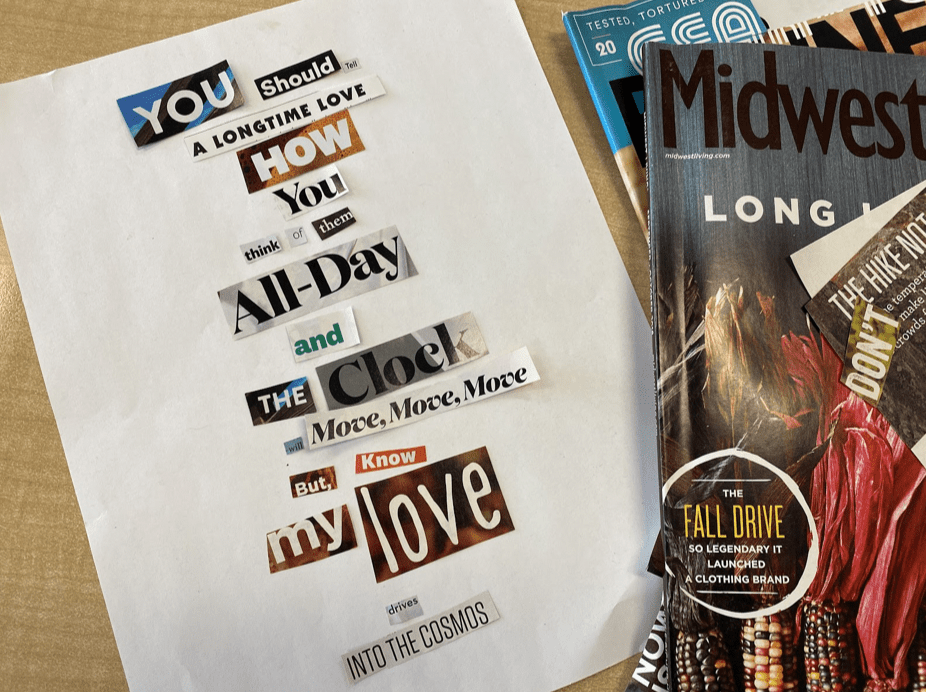
When I was in grad school, I had to teach a lesson to the other grad students. Most of them had already started teaching, but I had not. I spent hours and hours cutting out words from magazines to do this found-poetry lesson, and I remember my classmates telling me to save these because this kind of precious time can be hard to find in the thick of the school year. Sadly, I lost the hundreds of words I had cut out over the years, but I got smart and had my students cut out their own! Magazines are more expensive now, but track down free ones that your co-workers may want to throw out, ask for them, and have your students look for inspiring words to create an original poem. Paste the words on paper and have them title it. I love it when words and art overlap.
18. Perform plays
Just this week, one of my sophomore students asked me what we were going to be reading next. We just finished 12 Angry Men. She said she wanted to do another play. Then, another student chimed in and agreed. Plays are appealing for many reasons. Plays allow us to study literature without having to tackle the entire length of a novel. Plays allow students to become characters and perform. Plays invite students to let out their inner thespian. My students take on roles and commit to them.
19. Pique interest by doing First Chapter Friday
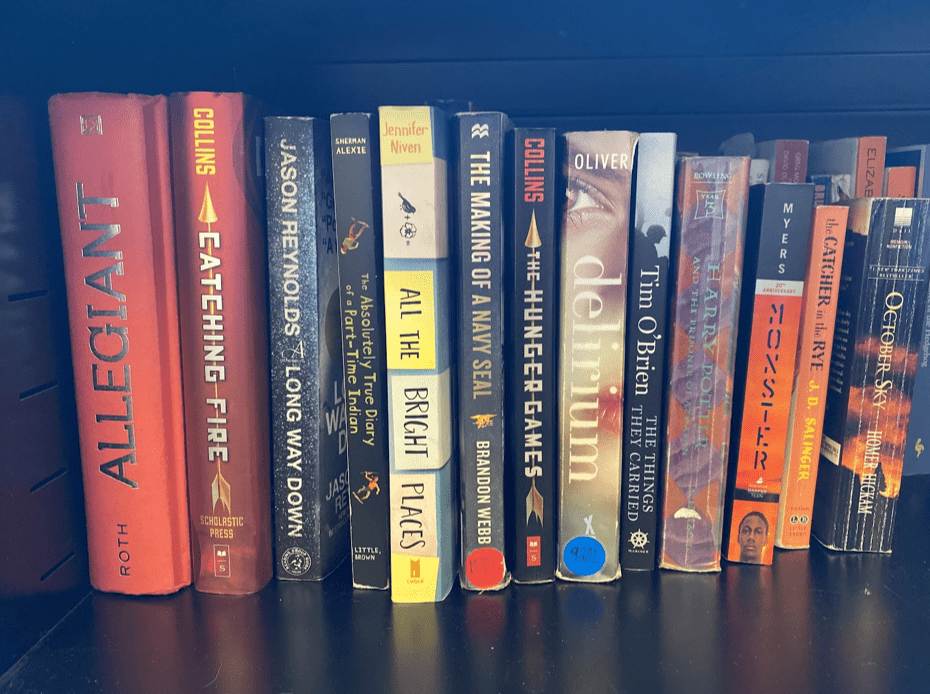
It may seem uncomfortable reading aloud to your secondary students, but I am telling you, they still enjoy it! Read an exciting first chapter from books that you hope they pick up and read on their own. First Chapter Fridays are especially great activities for high school English if you have an expansive library of books for them to choose from.
20. Have them create SNL-style satirical sketches
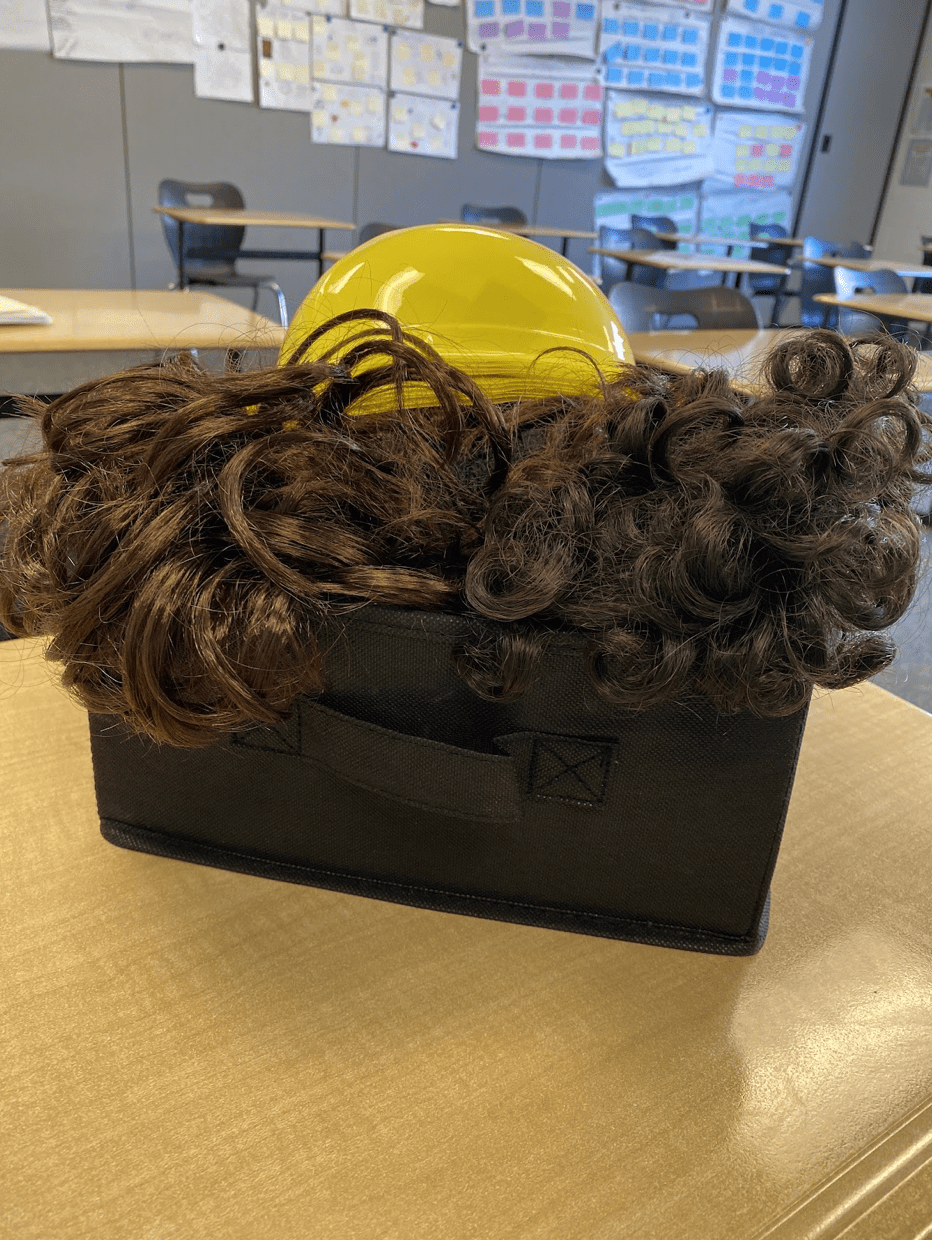
When I teach my students satire and parody, I show them examples of school-appropriate satire. Then, we discuss why it is satire. After we get the hang of it, I have them write and perform them. I also happen to have a weird collection of wigs and costumes in my room that may help them get into character. Funny wigs are always an asset!




















